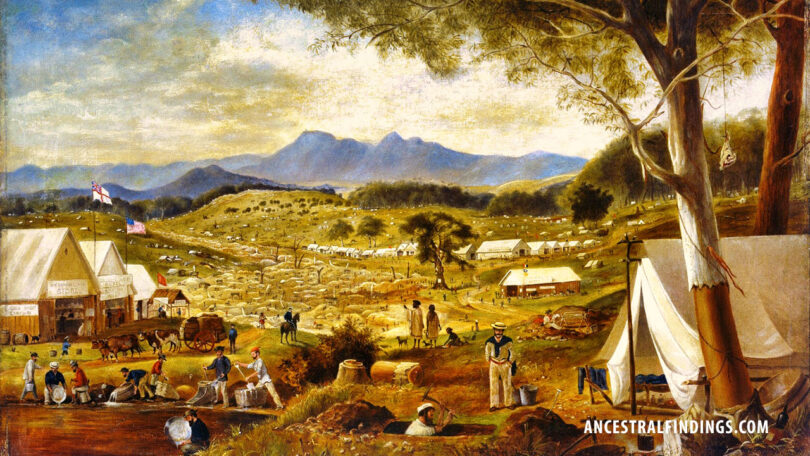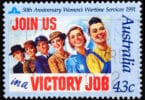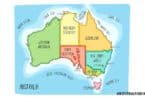The discovery of gold in Australia in the mid-nineteenth century sparked a massive influx of people to the continent, leading to one of the most significant periods of migration and social change in the country’s history. The Australian Gold Rush, which began in 1851, brought fortune seekers from around the world, dramatically increasing the population and leaving a wealth of historical records for genealogists to explore.
For many families, the Gold Rush era was a pivotal time, and tracing ancestors who participated in the rush can reveal fascinating stories of adventure, hardship, and, sometimes, prosperity.
The Impact of the Gold Rush on Australian Society
The Gold Rush didn’t just change the fortunes of those who struck it rich; it fundamentally altered Australian society. In a matter of years, the population swelled as immigrants from Europe, China, and the United States arrived, hoping to make their fortune. New settlements sprang up around the goldfields, leading to the rapid development of infrastructure, towns, and industries.
This influx of people and wealth also led to significant changes in the social fabric of the colonies. For many, the Gold Rush offered a rare opportunity to break free from the rigid class structures of Europe and build a new life in Australia. Understanding the social context of this era can provide insight into the lives of your ancestors and help you better interpret the records they left behind.
Types of Records Available from the Gold Rush Era
The Gold Rush era produced various records that genealogists can use to trace their ancestors’ movements, occupations, and experiences. These records document those who struck gold and the broader population who supported the goldfields, such as storekeepers, miners, and laborers.
Here are some key types of records from the Gold Rush era:
- Mining Licenses: Gold miners were required to obtain licenses to prospect for gold. These records often contain the miner’s name, the date the license was issued, and the location of the claim. Mining license records are valuable for identifying ancestors who worked in the goldfields.
- Immigration Records: As gold fever gripped the world, people from across the globe flocked to Australia. Immigration records from this time provide details on those who arrived in the colonies seeking fortune, including their port of origin, ship, and occupation.
- Goldfield Newspapers: Newspapers from the goldfields often contain rich details about life in the camps, the success (or failure) of mining operations, and lists of miners. These papers are available in digitized collections like Trove, managed by the National Library of Australia, which can help you find mentions of your ancestors.
- Wills and Probate Records: Many miners who struck gold left wills detailing their newfound wealth, which often includes information about their family members and possessions. Probate records can provide insights into how the wealth from gold was distributed among family members.
- Court Records: Disputes over mining claims were common during the Gold Rush, leading to many court cases. These records can reveal details about your ancestor’s dealings in the goldfields, from ownership disputes to violent altercations.
- Chinese Immigrant Records: Many Chinese immigrants played a crucial role in the Australian Gold Rush, forming significant communities around the goldfields. Specific immigration records, newspaper articles, and Chinese genealogical resources can provide information about ancestors from this group, who often faced discrimination and hardship.
Accessing Gold Rush Era Records
To begin tracing your ancestors from the Gold Rush era, you’ll want to access the various types of records that have been preserved and, in many cases, digitized. Here are some key resources:
- Public Record Office Victoria (PROV)
PROV holds a significant collection of records related to the Victorian goldfields, including mining licenses, correspondence, and court records. Many of these are digitized and available online.
- State Archives of New South Wales
The New South Wales State Archives holds immigration records, mining licenses, and other documents from the Gold Rush era. Their catalog is available online.
- Trove (National Library of Australia)
Trove is a free online resource that provides access to digitized newspapers, including many from the Gold Rush period. Searching these papers can help you find mentions of your ancestors in reports from the goldfields.
- Chinese Australian Family Historians of Victoria
For those with Chinese ancestry, the Chinese Australian Family Historians of Victoria offer specialized resources for tracing Chinese ancestors who arrived during the Gold Rush. These include immigration records, newspaper clippings, and community records.
- Immigration Museum Victoria
The Immigration Museum in Victoria holds various records and exhibits related to the Gold Rush, particularly focusing on the immigrant experience. These resources can be accessed in person or online.
Analyzing Gold Rush Records: What They Reveal About Your Ancestors
Once you’ve accessed Gold Rush records, they can reveal a wealth of information about your ancestors and their lives during this pivotal period. Here’s what you can learn:
- Occupational Status: Mining licenses and related records will often tell you whether your ancestors were directly involved in gold mining or if they worked in a supporting role, such as in a store or service industry near the goldfields.
- Migration Patterns: Immigration records can reveal whether your ancestors moved to Australia specifically for the Gold Rush, where they came from, and how they adjusted to life in the colonies. For Chinese ancestors, these records can also shed light on their hardships and the communities they formed.
- Economic Success: Wills, probate records, and mining disputes can reveal whether your ancestor struck it rich or struggled to make ends meet. These records can also show how any wealth was distributed among family members, providing insights into family dynamics.
- Community Involvement: Goldfields were tight-knit communities, and your ancestor’s name might appear in local newspapers, town records, or even court disputes. These documents can provide a glimpse into their interactions with other miners and settlers.
Case Study: A Family’s Gold Rush Adventure
Let’s consider a fictional example of how Gold Rush records can illuminate your family history. Suppose you discover that your ancestor, William Thompson, arrived in Victoria from England in 1852. A search of immigration records reveals that William listed “miner” as his intended occupation.
By accessing mining license records from the Public Record Office Victoria, you find that William obtained a license for a claim in Ballarat. Further research in local newspapers via Trove uncovers an article mentioning William’s small but steady success in the goldfields.
Later, probate records reveal that William’s will, written in 1865, left his modest fortune to his wife and children, offering a clearer picture of his economic status and the impact of his goldfield adventures on his family.
This example demonstrates how Gold Rush records can provide a detailed picture of your ancestors’ lives, from their arrival in Australia to their success—or struggles—in the goldfields.
Uncovering Gold Rush Era Ancestors
The Australian Gold Rush was a time of immense change and opportunity, and the records left behind offer a rich resource for genealogists. By exploring mining licenses, immigration records, newspapers, and other documents, you can uncover the stories of your ancestors who participated in this defining period of Australian history.
Whether your ancestors struck gold or simply contributed to the booming communities around the goldfields, these records offer a window into their lives and the lasting impact of the Gold Rush on Australian society.
Read More:
“The Gold Rush: The Fever That Forever Changed Australia“ by David Hill
A detailed account of Australia’s gold rush, covering its impact on the country’s development and the people who sought fortune.
“Australians and the Gold Rush: California and Down Under 1849-1854” by Jay Monaghan
This book explores the relationship between the California Gold Rush and its influence on Australia.
“The Untold Story of the Australian Gold Rush” by Geoffrey Hargraves
A rare look at the Australian Gold Rush through images and historical accounts.







